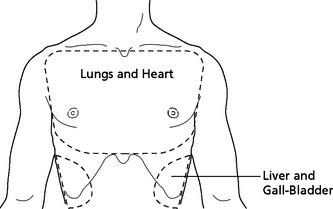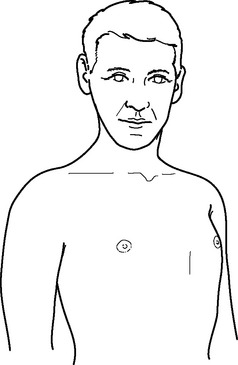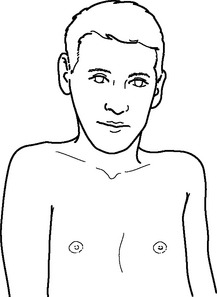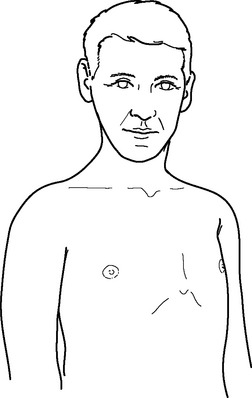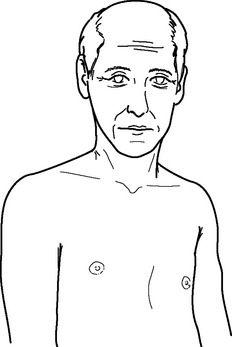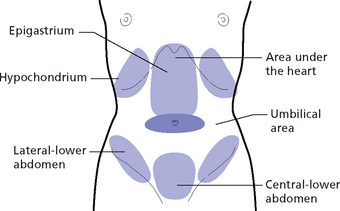Chapter 16 The front of the chest is influenced by the Lung and Heart channel and by the Directing and Penetrating Vessels; the sides of the chest are influenced by the Gall-Bladder and Liver channels (Fig. 16.1). For a more detailed description of the patterns causing chest signs, see Part 5, Chapter 63. Box 16.1 summarizes the channels influencing the chest. Symptoms and Signs, Chapter 63 The most common cause of a protruding chest (Fig. 16.2) is chronic retention of Phlegm in the Lungs. Other causes include severe, chronic Liver-Qi stagnation or Blood stasis in the chest. Symptoms and Signs, Chapter 63 The most common cause of a sunken chest (Fig. 16.3) is a deficiency of Qi or Yin of the Lungs. A Kidney deficiency may also cause a sunken chest. Symptoms and Signs, Chapter 63 The protruding sternum (Fig. 16.4) is either hereditary, in which case it is due to a constitutional deficiency of the Lungs and Kidneys, or it is caused by retention of Phlegm in the Lungs. Symptoms and Signs, Chapter 63 The chest can become sunken on one side (Fig. 16.5) either because of a deficiency of the Lungs, specifically affecting one lung, or because of retention of Phlegm-Fluids, often with Blood stasis. Symptoms and Signs, Chapter 63 The chest can become protruding on one side (Fig. 16.6) from Phlegm-Fluids in the Lungs, severe Liver-Qi stagnation or Heart-Qi deficiency with Blood stasis.
 OBSERVATION OF THE CHEST AND ABDOMEN
OBSERVATION OF THE CHEST AND ABDOMEN
CHEST
Protruding chest
Sunken chest
Protruding sternum
Chest sunken on one side
Chest protruding on one side
Basicmedical Key
Fastest Basicmedical Insight Engine

